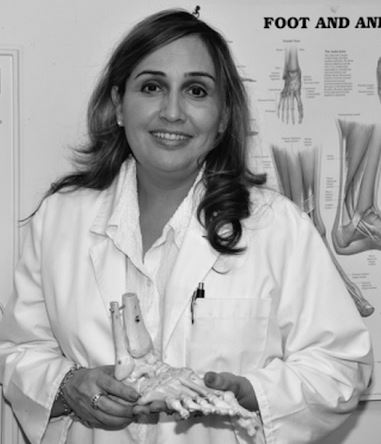“Do heel bone fractures require surgery?”
I am suffering a fracture in my heel bone and have been advised complete bed rest. This fracture happened 3 weeks back. In my followup visit to the doctor the X-ray showed that the fracture has still not improved much. Will I have to undergo a surgery to have this condition treated?
15 Answers
Podiatrist(FootandAnkleSpecialist)BoneFractures
It is difficult to answer this question without seeing your radiographs. Three weeks is too early to see much change in a fracture. Mini heel fractures do require surgery and there is no improvement at six weeks that may be your best option. Bone stimulator‘s are also very helpful but insurance will not usually pay for them until you have a delayed healing which they usually consider to be six months
This depends significantly on any displacement of the fracture sites and the cause for the slow healing. Don't typically takes 6-8 weeks to heal under good conditions.
For the most part heel bone fractures do require surgery. In some cases if there is no displacement or separation of misalignment of the fracture fragments you can probably heal well being non-weight bearing in a cast for 6-8 weeks. However, in your case the fracture shows no signs of healing after 3 weeks so surgery should definitely be done. Surgery with plates and/or screws would give the be stability to the heel bone since it is taking a lot of weight when walking.
Heel bone fracture healing may take 6-8 weeks. If the fracture is dislocated, you may require surgery. Please go see a foot and ankle surgery near your home.
It depends on the severity of the fracture and how displaced the fracture is. If the fracture is severely displaced, it would require surgery. If not displaced, a properly applied fiberglass cast would be adequate along with non-weigthbearing. I would caution you that it is a difficult decision to make and should be made by a qualified podiatrist.
Depends on the type and severity of the fracture, whether the joints were involved and much more. Impossible to determine without imaging results.
Fractures take 6-8 weeks to heal. You still need more time for bone consolidation. As long as the bone is in good alignment (not shifted out of place), it should heal fine. Just listen to your doctor and stay off of it. The only time surgery is needed is to put the bones back in the right position when they are out of place post trauma.
It depends if the fracture is displaced. Sometimes, X-ray findings lag behind the actual healing. MRI or CT scan can be performed as well to evaluate fracture. Also, bone stimulators can help heal fractures as well.
The heel bone known medically as the calcaneus is an extremely unique bone critical for the function of the hindfoot and the ability to appropriately load weight onto the foot. It possesses articular facets on its top surface to form a complex joint with the overlying bone known as the talus that we refer to as the subtalar joint. Distally it also has a joint that articulates with the tarsal cuboid bone of the mid-foot. The broad body of the calcaneus posteriorly also serves as an insertion for the largest and
strongest muscle tendon complex of the body appreciated as the Achilles tendon. There are multiple ligamentous attachments to this bone that maintain the stability and structure of the foot and ankle. Interestingly, with its significant need for weightbearing load, it is not terribly well designed structurally to do this. It has a thin cortical shell with significant medullary space and we frequently correlate this to almost like an egg with a hard shell and soft yolk in the middle. Fractures of this bone can become challenges depending on the mechanism of injury as well as the anatomic involvement. Broadly speaking we can speak of fractures that involve the complex joint surfaces and those fractures that do not. Not knowing the type of fracture that you have suffered makes it difficult to tell you whether surgery is indicated or not. Fractures that do not involve the articular surface and are considered nondisplaced body type fractures frequently do not require any surgery and heal quite readily given the nature of the bone. Those fractures that we refer to as intra-articular or joint involving that cause displacement and compression of the heel bone remain somewhat controversial in their treatment. For years, a conservative approach was considered given potential wound healing complications associated with surgical exposure. More recently, with an
evolution of surgical techniques, there has been greater interest in recommendation for anatomic reduction of these fractures to restore the gross normal anatomy of the heel bone speaking of its height with in length. Fractures that do involve the subtalar joint surfaces do have high risk for posttraumatic arthritis that may produce prolonged disability and require ultimately surgical fusion of this joint. Given the challenging nature of these fractures and the risk for long-term disability, these do require evaluation by a specialist well-versed in their management. If you have any concerns regarding your healing and treatment recommendations, I would highly encourage a second confirmatory opinion.
strongest muscle tendon complex of the body appreciated as the Achilles tendon. There are multiple ligamentous attachments to this bone that maintain the stability and structure of the foot and ankle. Interestingly, with its significant need for weightbearing load, it is not terribly well designed structurally to do this. It has a thin cortical shell with significant medullary space and we frequently correlate this to almost like an egg with a hard shell and soft yolk in the middle. Fractures of this bone can become challenges depending on the mechanism of injury as well as the anatomic involvement. Broadly speaking we can speak of fractures that involve the complex joint surfaces and those fractures that do not. Not knowing the type of fracture that you have suffered makes it difficult to tell you whether surgery is indicated or not. Fractures that do not involve the articular surface and are considered nondisplaced body type fractures frequently do not require any surgery and heal quite readily given the nature of the bone. Those fractures that we refer to as intra-articular or joint involving that cause displacement and compression of the heel bone remain somewhat controversial in their treatment. For years, a conservative approach was considered given potential wound healing complications associated with surgical exposure. More recently, with an
evolution of surgical techniques, there has been greater interest in recommendation for anatomic reduction of these fractures to restore the gross normal anatomy of the heel bone speaking of its height with in length. Fractures that do involve the subtalar joint surfaces do have high risk for posttraumatic arthritis that may produce prolonged disability and require ultimately surgical fusion of this joint. Given the challenging nature of these fractures and the risk for long-term disability, these do require evaluation by a specialist well-versed in their management. If you have any concerns regarding your healing and treatment recommendations, I would highly encourage a second confirmatory opinion.
If you are 1-30 years old, fracture heals in 4 weeks and 30-50, they heal in 5 weeks.... so age is a factor. Also, your intake of calcium with Vit D... do a DEXA test to evaluate your whole body calcium, bone density, then do the surgery.
Daniel J. Walters
Podiatrist (Foot and Ankle Specialist)
If the separate pieces of the heel bone are not displaced, I would use a bone stimulator and a walking boot or cast. The bone stimulator is a type of ultrasound or microwave that is specific for fractures. The patient needs to have it applied at the doctor's office but they run the unit at home every day, usually for several weeks.
If the fracture is good, alignment is fine and not to have surgery, but it may take 8-12 weeks for it to heal.
Depends on the type and severity of the fracture. Some heal, some don't. Need to see X-rays to assess.
Geoffrey Bricker, DPM
Geoffrey Bricker, DPM
Thank you for your question. I am sorry you are dealing with a fractured heel. There are two main types of calcaneal fractures, intra-articular and extra-articular. Both require different treatment protocols. I would be happy to review your x-rays with you and formulate a treatment plan. At Noah Foot and Ankle we have digital x-rays so I could take xrays and transfer them to the treatment room and manipulate them on the computer to further explain your condition to help you understand what would need to be performed to treat your condition. It would be my pleasure to discuss your condition further. Please call the office during normal buisness hours and we will set up an appointment to address your painful condition. Thank you for your inquiry.














